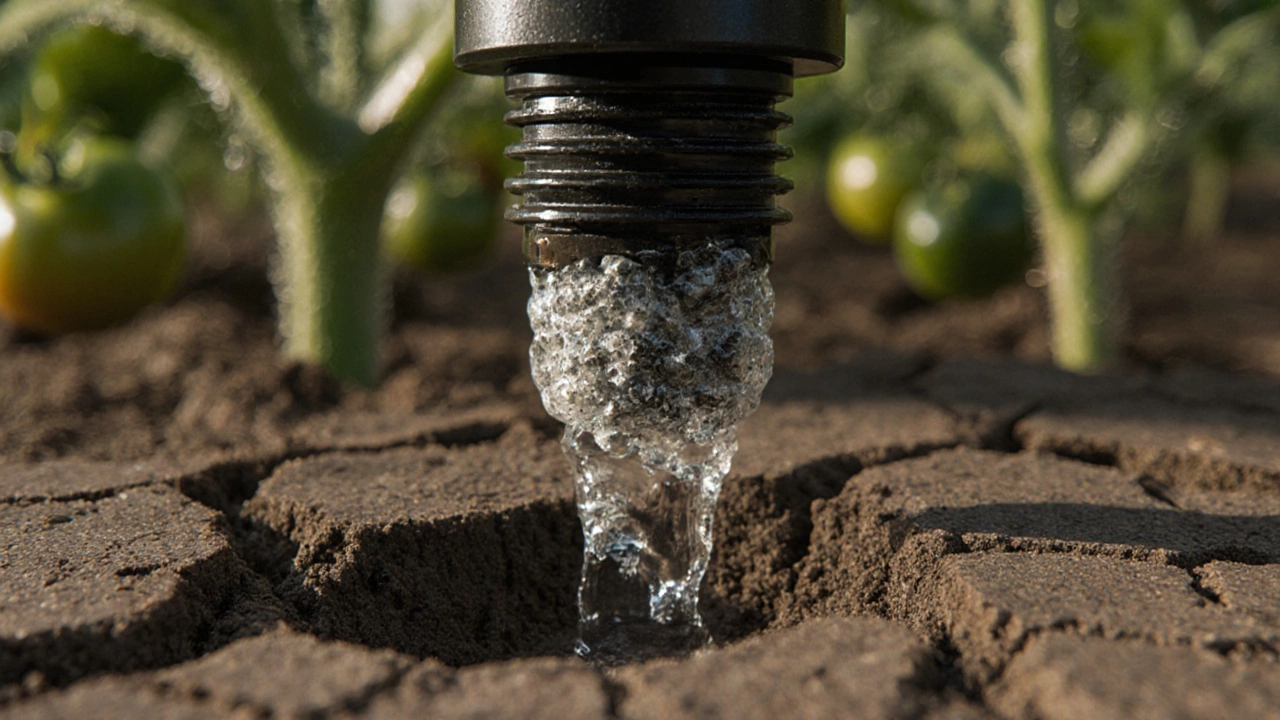Drip emitters are efficient but prone to clogging, uneven flow, and damage. Learn the common problems and how to fix or prevent them to keep your garden healthy and water-efficient.
Drip System Maintenance: Keep Your Watering System Running Smoothly
When you set up a drip system, a network of tubes and emitters that deliver water slowly and directly to plant roots. Also known as drip irrigation, it’s one of the smartest ways to water your garden in India’s hot, dry seasons. But like any tool, it doesn’t run itself—drip system maintenance is what keeps it from turning into a leaky, clogged mess. A poorly maintained drip line can waste water, stress your plants, and cost you time and money. You don’t need fancy gear or a degree in engineering. Just a little routine care.
Most people think drip systems are "set and forget," but that’s where things go wrong. Emitters get blocked by dirt, algae, or mineral buildup—especially if you’re using well water. Tubing cracks in the sun. Connections loosen. A single clogged emitter can mean your tomato plant gets nothing while the one next to it gets flooded. That’s why checking your system every two weeks isn’t optional—it’s essential. Look for dry patches in your soil, uneven plant growth, or drips where they shouldn’t be. These are your early warning signs.
Related to this, irrigation efficiency, how well your system delivers water exactly where it’s needed without waste is the real goal. You’re not just watering—you’re conserving. In places like Rajasthan or Tamil Nadu, where water is tight, a well-maintained drip system can cut usage by half compared to buckets or hoses. And it’s not just about saving water. It’s about growing better. Plants with steady, root-level moisture don’t shock, don’t drop flowers, and don’t get fungal diseases from wet leaves.
Don’t overlook the basics: flush your lines every month, clean filters weekly, and replace worn emitters before they fail. Keep a small notebook—note when you last cleaned, which emitters were clogged, and where you found leaks. That’s how you spot patterns. Maybe your chili plants always dry out after monsoon season? That’s a clue your system needs adjusting. Or maybe your pump runs louder than usual? That could mean air got into the line. These aren’t mysteries—they’re fixes waiting to be made.
And if you’re using compost tea or organic fertilizers through your drip system, you’re doing great—but you’re also increasing the risk of blockages. Organic matter doesn’t dissolve like chemicals. It gels. So flush more often, and use a finer filter. Some farmers swear by vinegar rinses to dissolve mineral deposits. Others use plain water pressure. Try both. See what works in your soil.
What you’ll find below are real stories from Indian gardeners who’ve been there—fixing broken lines in balcony gardens, rebuilding systems after monsoons, and learning the hard way that a $5 filter saves a $200 pump. These aren’t theory guides. They’re hands-on fixes for the kind of problems you see every week in your own yard. Whether you’re growing vegetables on a rooftop or managing a small farm, the same rules apply: keep it clean, check it often, and fix small problems before they become big ones.
